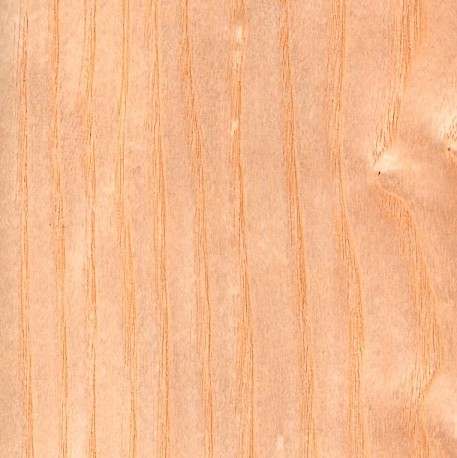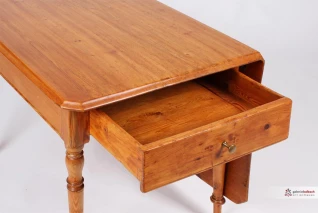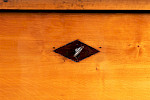Ash
Botanical name: Fraxinus exelsior
 Ash wood, just like oak wood, is ring-porous and coarse-pored. Due to the fact that the trunk usually grows straight and has few knots, the structure is simple and straight. There are only a few colour differences within the trunk. Due to its simplicity, the trunk wood was rarely used to design entire furniture fronts. Due to its good elasticity, it was used more for chairs or parquet flooring.
Ash wood, just like oak wood, is ring-porous and coarse-pored. Due to the fact that the trunk usually grows straight and has few knots, the structure is simple and straight. There are only a few colour differences within the trunk. Due to its simplicity, the trunk wood was rarely used to design entire furniture fronts. Due to its good elasticity, it was used more for chairs or parquet flooring.
Antique furniture made of ash
In the Baroque period, the wood of the white ash was used for bandelwerk marquetry, usually in contrast with walnut or ebony.
During the Biedermeier period, Ash became fashionable in north-eastern Germany because, unlike the trunk wood, the burl or root wood of the Ash is excellently suited for decorating cabinets, secretaries and chests of drawers and was used as a mirror-finished veneer.
A good shellac polish "fires" the wood, i.e. the structure of the wood emerges more clearly, the weak colours become strong and warm.
The ash wood used in the period of origin of our antique furniture came from the respective region of origin of the furniture.
Also interesting

Spruce / Fir
Spruce and fir wood is one of the domestic softwoods. It was used as solid wood for rural and simple furniture. [...]Read more
















